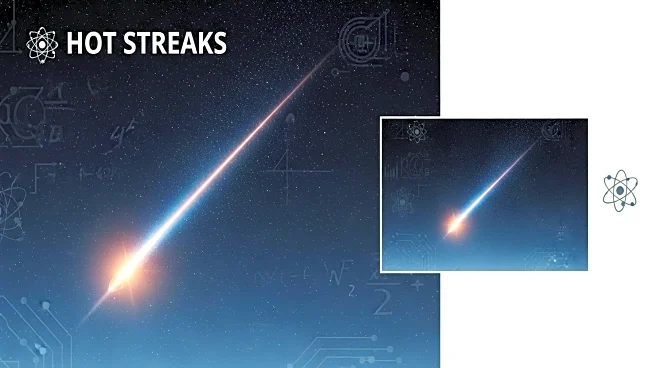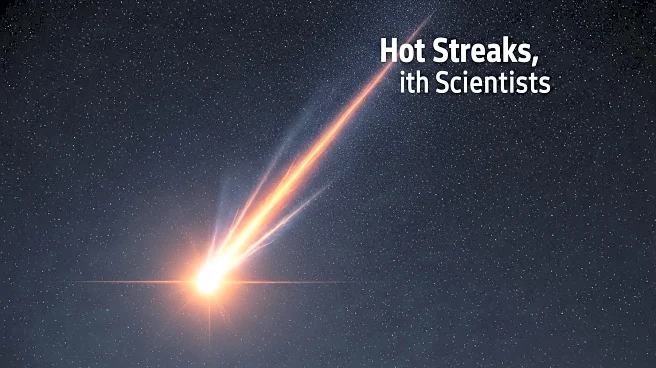What's Happening?
A study using the Microsoft Academic Graph dataset has examined the relationship between hot streaks and disruptiveness in scientists' careers. Focusing on experienced researchers in economics, the study analyzed over 200 million publications to identify patterns of disruptive impact. The findings suggest that hot streaks, periods of heightened productivity and impact, may be associated with increased disruptiveness in scientific work.
Why It's Important?
Understanding the dynamics of hot streaks and disruptiveness can provide insights into the factors that drive scientific innovation and impact. The study's findings may influence how research institutions and funding bodies support scientists, potentially encouraging environments that foster creativity and breakthrough discoveries. By identifying patterns in scientific careers, the study contributes to the broader understanding of how innovation occurs and how it can be nurtured.
Beyond the Headlines
The study highlights the importance of considering team size, productivity, and career timing in understanding scientific disruptiveness. These factors may play a role in shaping the trajectory of a scientist's career and their ability to produce groundbreaking work. The research underscores the complexity of scientific innovation and the need for tailored support to maximize impact.











